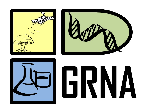Banca de QUALIFICAÇÃO: WAGNER ANTONIO TENÓRIO FREITAS
Uma banca de QUALIFICAÇÃO de MESTRADO foi cadastrada pelo programa.DISCENTE : WAGNER ANTONIO TENÓRIO FREITAS
DATA : 31/01/2020
HORA: 09:00
LOCAL: Sala 107 - Campus Amazônia
TÍTULO:
...
PALAVRAS-CHAVES:
Protected areas. Bertholletia excelsa. Carajás. Harversting. Population structure.
PÁGINAS: 32
GRANDE ÁREA: Outra
ÁREA: Ciências Ambientais
RESUMO:
The chestnut tree (Bertholletia excelsa Bonpl.) Is a useful species of great socio-environmental and economic importance in the Amazon and widely distributed in southeastern Pará before the agricultural expansion (started more than fifty years ago in the region). Multiple researches have already been done on the population ecology of Brazil nut trees in the Amazon Basin, yet the region of the Mosaic of Conservation Units of Carajás and Parauapebas (Southeast of Pará) lacks systematic studies that assess the regeneration and population structure of this species. Currently the mosaic of protected areas of Carajás is the main reservoir of the species in the region. This work aims to analyze the population structure of B. excelsa in MUCCP with different gradients of collection intensity. The field activity will have three main phases: mapping, methodological testing and data collection. The two main protected areas studied will be: Tapirapé-Aquiri National Forest and Tapirapé Biological Reserve, the first has extractive activities and the second does not. The history of use of the study areas will be characterized from qualitative information and empirical verifications. Chestnut trees with DBH> 10 cm will be inventoried using the chronosequence methodology and with the participation of local experts in the area. The detected trees will be plated, georeferenced, photographed and measured. The distribution of frequencies by diametric classes will be carried out in the different types of areas for extractive use. The density of trees by areas will be estimated using Google Earth's perimeter tracing method from the mapped and inventoried chestnut trees. Estimates of fruit production will also be made on selected trees in each study area. The comparative analyzes of the collected quantitative variables will be made by means of comparison tests of means. It is expected to obtain comparative results between areas with different gradients of collection intensity, deepening the knowledge on the subject and seeking answers about the influence of chestnut collectors under the regeneration and maintenance of B. excelsa populations, besides offering subsidies to management of the UC's in question. This research project is the result of an institutional partnership between the Chico Mendes Institute for Biodiversity Conservation and UFOPA.
MEMBROS DA BANCA:
Interno - 1794640 - EDSON VARGA LOPES
Externo ao Programa - 1520271 - JOAO RICARDO VASCONCELLOS GAMA
Presidente - 1796322 - RICARDO SCOLES CANO




